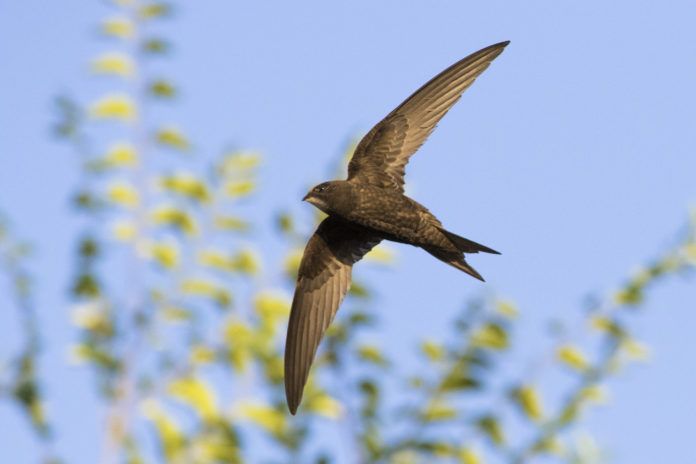As part of ‘Swift Awareness Week’ (3-11 July, 2021), the National Federation of Roofing Contractors (NFRC) is urging its members to keep an eye out for swift nests before starting work on a roof, to help reverse the decline seen in recent years in the swift population.
The NFRC is working proactively with the RSPB to try to raise awareness amongst the roofing industry and encouraging the installation of swift boxes.
Swifts evolved 60 million years ago, yet in the last 20 years, their numbers have almost halved, due mostly to the loss of nesting sites, often unintentionally as a result of roof renovations.
Swifts migrate from Africa to the UK each year to breed, usually starting to nest in May and remaining until August. Therefore, now is the time for roofing contractors to be checking if there are any swifts nesting on the site they are working on and ensure these are protected.
The NFRC and the RSPB are advising roofing contractors to:
- Check if there are swift nests where you are working using https://www.swiftmapper.org.uk/.
- If you do discover a swift nest on the site, discuss delaying the project with your client to undertake the work outside of swift nesting season (May to August).
- Outside of swift nesting season, if you discover a swift nest, try to protect this as swifts tend to come back to the same nest sites year on year. There are lots of examples where with careful design, roofing work has taken place whilst maintaining entrance points for swifts.
- If there is no way of preserving the nest, so as long it is outside of nesting season, swift nest boxes and bricks can be installed to replace nesting sites.
- Consider installing swift boxes as an additional service for your clients – these will become in higher demand as more and more Local Authorities introduce biodiversity targets, and the UK government introduces Biodiversity Net Gain into planning legislation.
- Listen to the NFRC RoofTop podcast with the RSPB on protecting swifts https://nfrcrooftop.podbean.com/e/episode-8-ft-katie-oneill-from-rspb/.
Commenting on the partnership with the RSPB, Gary Walpole, safety, health and environment officer at the NFRC, said: “The decline in the swift population over the last 20 years is shocking – but it doesn’t have to be this way. With a little bit of forward planning, education and collaboration, we as an industry can play our part to help reserve this trend.
“Swifts are the sight of summer, so now is the time to be on the lookout for any nests. I am encouraging members, between now and the end of August, to check the swift mapper website before starting on any new refurbishment job.”
Gary concluded: “Not only can roofing contractors help stop the decline, but they can actually encourage more swifts to nest here by offering to install swift boxes as an additional service or improve the biodiversity of buildings for decades to come.”
Katie O’Neill, RSPB Scotland Edinburgh swift city project officer, said: “Protecting and enhancing the populations of swifts is vital, achievable and a positive example of how humans and animals can occupy the one space without excluding each other. With thanks to ScottishPower Foundation, we are spreading awareness of the swift and finding long term solutions to halt population decline.
She added: “It has been wonderful to work with people across different sectors and the NFRC have been fantastic and responsive in the work of conserving the swift species across the whole of the UK. We look forward to hearing about and sharing inspiring case studies from roofers implementing the above swift friendly actions.”




